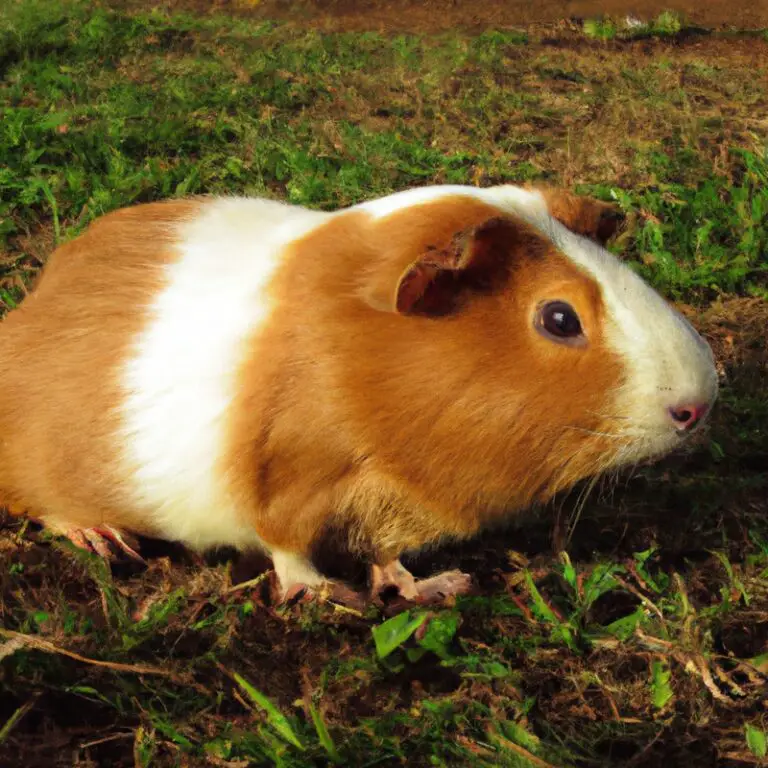Are Heat Pads Safe For Guinea Pigs?
Guinea pigs cannot regulate their temperatures. Their body temperatures fluctuate depending on their environment.
This is why it’s advised to keep your guinea pigs indoors during winter due to the intense cold. If the temperature is too cold for you then it’s biting cold for your little ones too.
The Animal Welfare League advises that guinea pigs should be kept at temperatures between 64 degrees Fahrenheit and 77 degrees Fahrenheit.
You are responsible for your pets so you should ensure that they live in a conducive environment. It shouldn’t be too cold or too hot. Both extremes have negative side effects.
So how do you get your guinea pig warm when it’s cold? Is it okay to use heat pads?
Let’s find out.
Are heat pads safe for guinea pigs?
Yes. Heat pads are safe for guinea pigs. They are an easy way of keeping your guinea pig warm. Whether it’s during the winter or you live in a place where temperatures tend to drop really low, using heat pads for your guineas will do just the trick.
You can put them inside the cage and not have to worry about anything. Your pet will snuggle up to the soft heat pads for warmth. These pads can keep up warmth for as long as 8 hours.
Which heat pads are best?
Mainly used heat pads are the microwaveable heat pads and the electrical heat pads. Both are the same in functionality and effectiveness. Their only difference is their source of heat.
Microwaveable Heat Pads
Microwaveable heat pads use microwaves to warm up. You place the heat pads inside the microwave for a few minutes then they are good to go.
Always be careful not to overheat. Put the heat pads in a fleece cover if they don’t have one, and place them inside the cage.
Electric heat pads
Electric heat pads come with a cord to connect to an electric source. They heat up gradually.
You can cover them with a towel or fleece for comfort. Most people are wary of them because they feel that guinea pigs, being chewy animals, can chew the cord and get electrocuted.
These pads, though, are usually made of chew-resistant material. However, for safety purposes, keep a check on your pet if using this type of heat pads.
How to know if a guinea pig is cold
It’s important to always keep an eye on your pet to notice anything out of the norm. If the temperatures are cold, for instance, you will see some signs to show that.
- Shivering – a shivering guinea pig will be a good sign that it’s chilled out. Shivering is brought about by involuntary muscle contractions to try to keep one warm.
- Numb – a freezing cold guinea pig will stay at the same place without moving and looking numb.
- Huddling – if you have two guinea pigs, they may be huddled together at a corner. If you have one, it could curl up in a ball trying to keep warm.
- Cold ears – touching the ears will let you know if they are cold or not. If cold, the ears will be unusually cold.
Side effects of being cold
If too cold, your guinea pig will not be as active as usual. Other effects of the cold are:
- Upper Respiratory Infection(URI).
- Arthritis in older animals which brings about stiff painful limbs.
- Signs of pneumonia.
How to keep guinea pigs warm
Using heat pads is a safe and effective way of keeping guinea pigs warm. Remember, you are trying to keep them warm and not hot.
Heat pad alternatives are:
- Socks with rice- this is a simple DIY where you put rice in a sock that has been folded twice and then microwave it. You can use it as a homemade heating pad but ensure to feel the temperatures.
- Provide blankets and fleece.
- Create a hidey – you can have a hole inside the cage where they can hide under like they do in the wild.
- Make sure there is a lot of hay in the cage.
- Ensure the bedding is dry at all times to prevent your guinea pig from living on urine.
- Covering cage at night.
- Bring home another guinea pig for cuddling.
How to know if a guinea pig is overheated
Overheating is dangerous in guinea pigs too. It can cause heatstroke.
Signs of overheating are:
- Looking limp.
- Breathing fast or very slow.
- Drooling a lot.
- Increase in heart rate
- Eyes that are closed or not moving at all.
What to do with an overheated guinea pig
- Remove the guinea pig from the cage.
- Keep guinea pig in a cooler place.
- Try cooling your pet. Dip your hand in water and rub the wet hand all over the piggy’s fur. You can also dip a towel in water, wring it, then wrap the guinea pig in the towel.
*Do not try to dip the pet in cold water right away.
- Hydrate your guinea pig. You can give the pet water or veggies with high water content like cucumbers. If the pet is unable to eat, try giving water using an eyedropper.
- See a vet. Seeing a vet is crucial so that they may check if everything is back to normal and give any recommendations they see fit. So take your pet to a vet immediately after giving the first aid even if the pet is already in a stable condition.
Conclusion
Heat pads are safe and they can warm up a really cold cage preventing any cold bites on your pet. You can always use a thermometer to measure temperatures in the cage or the pet’s environs to avoid overheating or over-freezing of the delicate piggy.
You can purchase heat pads from pet stores or online. Always follow the instructions on the pack to stay clear of avoidable accidents.
Always check your piggy’s weight often to notice any unusual fluctuations in weight which could mean that something is not okay. Make sure they have enough Vitamin C to keep their immune strong.
Give them foods like capsicums, tomatoes, carrots, and leafy veggies which are good sources of Vitamin C.



![Why Do Guinea Pigs Yawn? [Common Behaviour Explained!]](https://atractivopets.com/wp-content/uploads/2020/10/Guinea-Pigs-Yawn-768x526.jpg)



